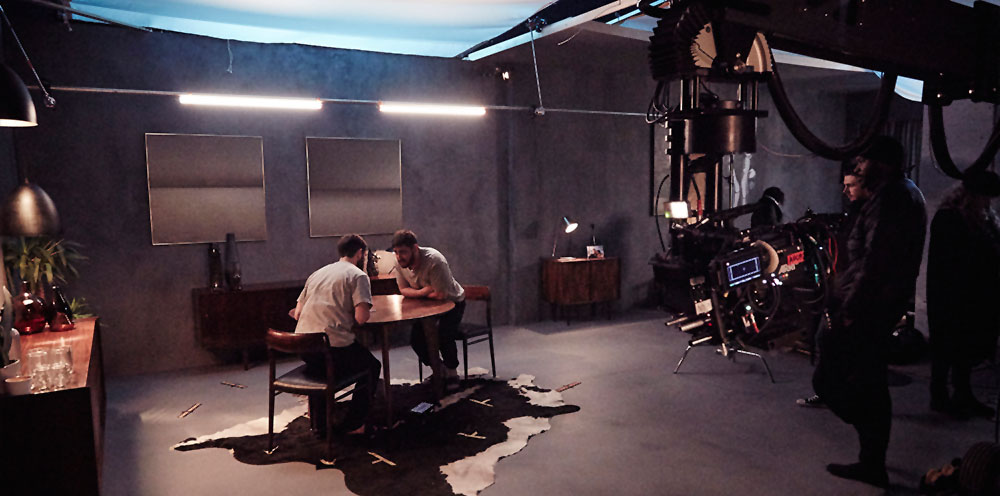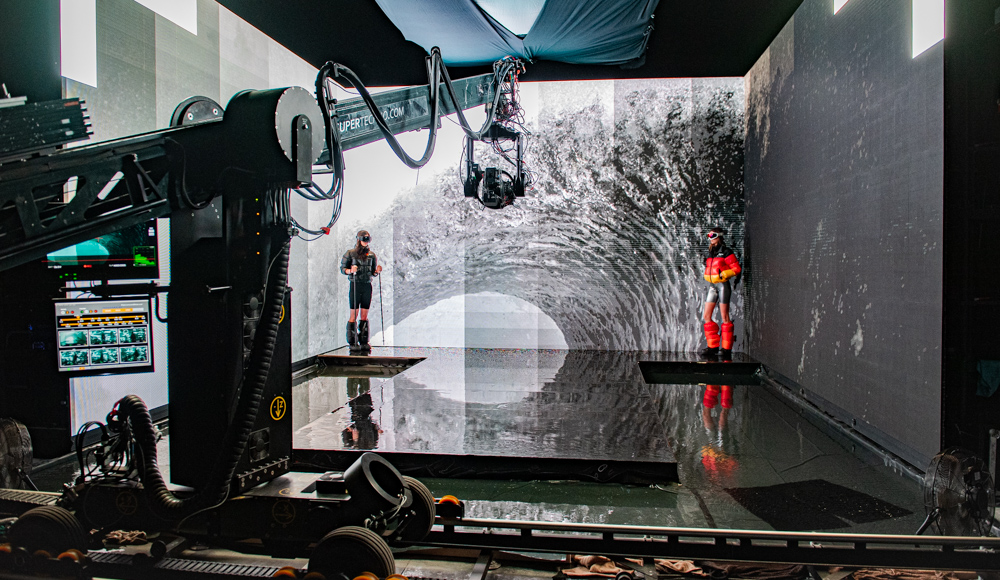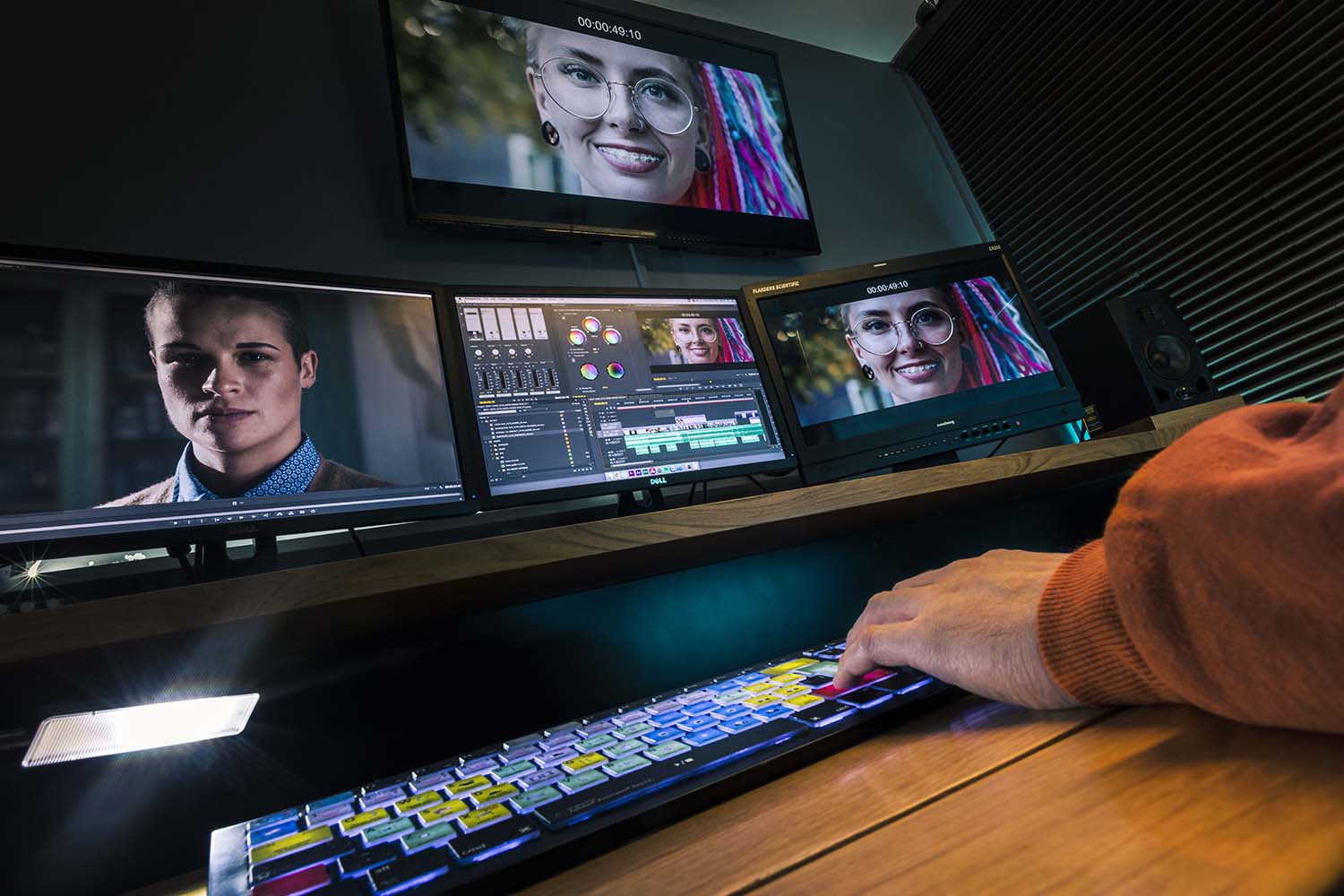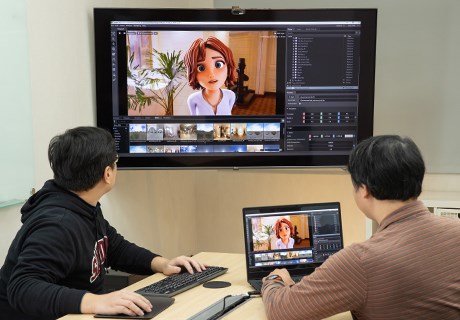Since being founded 22 years ago, Sandstorm Films has consistently pushed the boundaries when it comes to technology and filmmaking. From being the first company in the UK to have an Arri Alexa Cinema Camera (now a staple of filmmaking) to being the only production company with a repeatable camera crane – the TechnoDolly – the very nature of Sandstorm has always been to innovate how the production process works.
With the need for a near-real time render solution to reduce post-production time and bring rendering in-house, the visual effects specialist film production company, Sandstorm Films brought ASUS on board to explore potential options, with results beyond expectations.

Industry leadership: the Sandstorm way
When founding Sandstorm, managing director Tom Ward decided he wanted to cut the ‘smoke and mirrors’ out of film production, and to focus instead on the technology and the results that technology would enable Sandstorm to deliver to clients.
“We’ve always looked to be a little bit ahead of the industry when it comes to integrating technology into the production business. Whether that’s in the form of studios, kit, crew or post-production, making sure that we are consistently ahead with the technology we use means we regularly work on features for Marvel, Disney and Netflix to name a few, as well as advertising,” he says.
“For example, by being the only production company to have its own TechnoDolly and operators, we created a new offering for clients that is heavily sought-after. It’s almost always used on feature film work as they rely heavily on the use of visual effects (VFX) and computer-generated imagery (CG), which the TechnoDolly lends itself to perfectly.”

Reaching near-real-time rendering
With VFX and CGI being at the forefront of such productions, it’s not just the kit in the studio that consistently needs to be upgraded, improved, tested and experimented with. The post-production department at Sandstorm is rapidly evolving too, while being busier than ever.
“I’ve worked in CGI for 25 years, and it’s now a massive part of our post-production business, and the whole industry. But, historically, it has also been the slowest part of the process, because CGI takes time – a lot of time – to render. While you could do everything else on a shoot in two weeks, the CGI would take 10. It was a huge bottleneck.”
The 3D and CGI side of the business has always been based on Windows machines – predominantly multi-workstation-based render farms – that are set up for intensive graphic processing. Though the machines were good and served the purpose, it wasn’t always a smooth process: inconsistencies and drawbacks meant render times were still slow, whether due to different versions of Windows, network limitations or differing CPUs.
Tom continues: “We’d often end up with render anomalies that not only slow everything down but can also be costly. It’s expensive, and very dependent on the amount of work being processed through the render farm, not to mention the number of processors required or the demand for it.
“But the tech has come so far. Just look at Unreal Engine from Epic Games: that’s now a big part of what we do and it has been adopted by the whole film industry. So we decided it was time to be more ambitious, and set ourselves a target of a 12-15 times reduction in render time, which led us on to exploring our options.
“The easiest starting point was to talk to one of our IT Partners, the IT Collective. I’d essentially given them the ballpark I wanted to spend and the render times I wanted to hit with various render software, but they exceeded that by miles.”
Putting the value into Value Added Reseller
Owen Williams from IT Collective has worked alongside Tom at Sandstorm to create bespoke systems for 10 years. He knows how Sandstorm works and has an in-depth understanding of its infrastructure.
“When Tom explained to me what they were trying to achieve and what solution we could come up with for Sandstorm, it was an interesting challenge. We’re very experienced in the creative industries so we understand their challenges well, and we like being able to create the best solution for those clients. That means that the best solution per customer project requires incredibly specific hardware criteria.
“When specifying this hardware we look for flexibility, specifically upgradability. Because what we’re building are unique, bespoke solutions, we like a vendor that’s willing to listen to what we’re trying to do and provide help and guidance for us when it’s needed or requested.”
Sandstorm’s new server would need fast 10Gb Ethernet, with enough slots to enable people to work remotely. “In addition,” Owen continues, “it also needed outstanding graphics power and a slot to enable it to capture video. And yes, it’s also essential that we look for value for money, not ‘cheap’ - ‘value’.”
As an ASUS Servers Partner, the IT Collective knows that ASUS scores highly on each of those attributes, especially when compared to proprietary, standard machines for proprietary, standard use-cases. After much comparison, several ASUS servers were considered an ideal fit.
“We settled quite quickly on the idea that an ASUS server with some powerful GPUs in it was going to be at the core of the solution for Sandstorm. The right combination of performance and flexibility for the future, at the right cost for the duration of its projected life, meant that we could provide a solution that would really go beyond the expected results.
“We did the calculations before speccing-up a server – an ESC4000A – that we felt would achieve at least the 12-15 times improvement, and which we would also be able to upgrade in the future – with new GPUs, for example. This means that the whole system can keep pace with changing video technology and software requirements.”
The proposed solution fitted the bill for Tom, who was keen to get it in and up and running as a major project was about to begin. This led to the server being commissioned onto Sandstorm’s network in February 2021.
Results
Does Sandstorm’s ASUS achieve its target of a 12-15 times improvement in render times, saving both time and incurred costs?
“Absolutely,” Tom Ward remarks without hesitation. “On most jobs it’s nearer 20 times faster, sometimes even 40. At first it was weird; we’d ask ‘How can it be done that quickly?’. But the server and its processors are particularly good at calculating multiple polygons, which was so interesting as different types of jobs require different processing styles. This server just gets on with the job. It’s a reliable, hugely effective tool.”
“I haven’t actually ever had to log into it, it just works, doing what it’s supposed to do,” Owen Williams agrees.
Tom Ward continues: “We’ve never had a discussion in the last 18 months about ‘oh, the server won’t do X’. It just does it without issues, which means we can focus much more on the important aspects of the post-production process. It renders pretty much in real time, quick enough for our team and CGI artists to say ‘Does that look good or not? Yes or no?’. And we’ll know the answer there and then. We used to have to wait until the next day to find out once our old system had finally finished rendering it. So a lot of the process is borderline real-time, and this machine is the reason we’re getting those results.”
A time-saving success, the server has also made an impression when it comes to cost too. In film production, time is money.
“We think the server might have paid for itself within a few days,” Tom says. “I’ve worked in CGI for 25 years, and there have always been little improvements, but this is the biggest single improvement that’s happened with the technology recently. To put the change into perspective: the first scenes we ever rendered in-house took two days per frame. A render farm we could ship it to, at high cost, still took 3-4 hours per frame. This machine can render a frame, at 16K resolution, with over 1000 CGI trees in the scene, in just 40 minutes.”

New opportunities
Organisations usually invest in IT either to solve a challenge or to open up new opportunities. Sandstorm’s investment in the ASUS server, while originally a solution to a historical yet continuous problem, also generated a new line of opportunity for the business.
“Last year we were doing a lot of work for Marvel, filming on a lovely set at Pinewood. We were planning to shoot what’s referred to as ‘plates’, whereby you shoot all the layers of the scene individually so you can manipulate them in post-production.
“The difference with this shoot was the Visual Effects Supervisor told us that we didn’t need to shoot any plates, as most of the wide shots were going to be re-created in CGI. Instead, they LIDAR-scanned the entire room, and then rebuilt it in CGI. They cut the actors out, then put them back into that scene, giving them the freedom to modify bits of the scene to a much greater extent than with regular plates.
“Now, that technology is very, very new, but I thought ‘wow, that’s brilliant, we should take that to Sandstorm. This server meant that we could, so we did. It added a new string to our bow, it’s as simple as that.
“Thanks to our ASUS server, my teams now spend much longer on the other film-making elements and the creative process. What type of lens do we need on the camera? How do the scenes interact? Does the shot look right from a creative perspective? These are all questions that we can now ask and have answers to in near-real time with the server. We can check almost immediately, either moving on or re-doing it if it’s not quite right. It has made us better film producers and raised the level of our offering across production and post-production for our clients.”
About Sandstorm Films
Sandstorm Films provides a full range of production services for film, tv and digital, including crew, cinema quality cameras, lights and grip, film studios and full post-production including editing, grading, VFX and CGI.
For more information, visit sandstormfilms.com.






